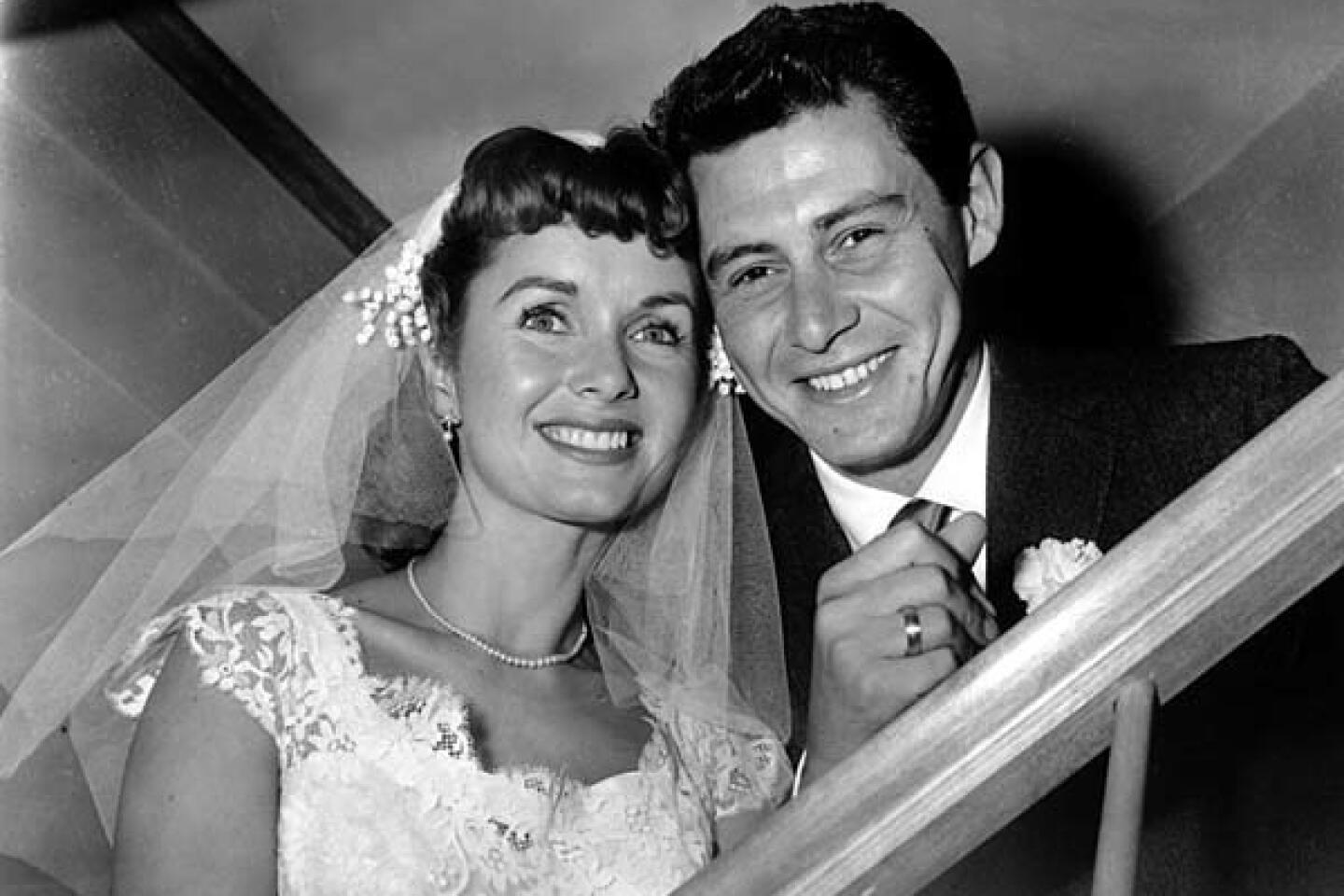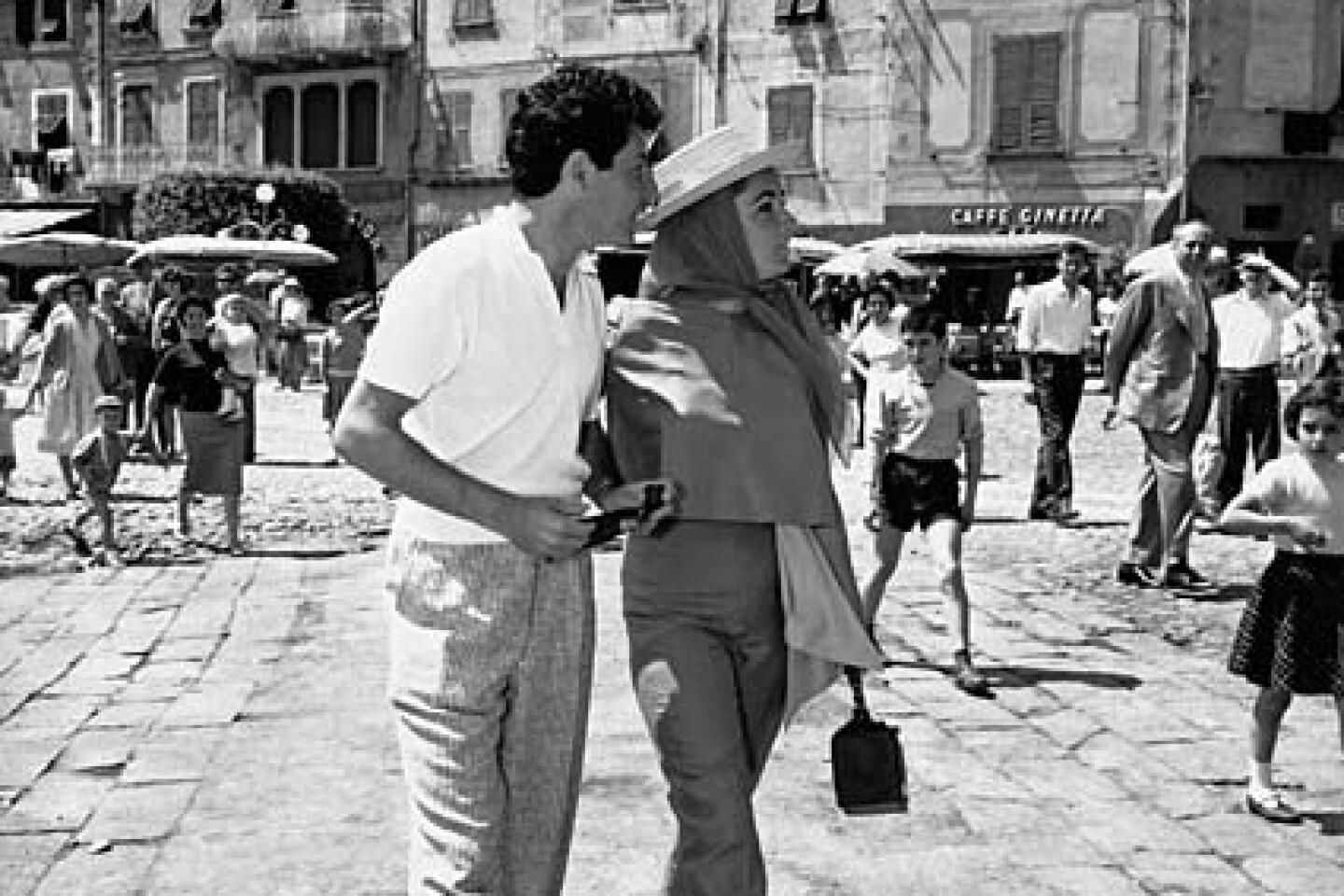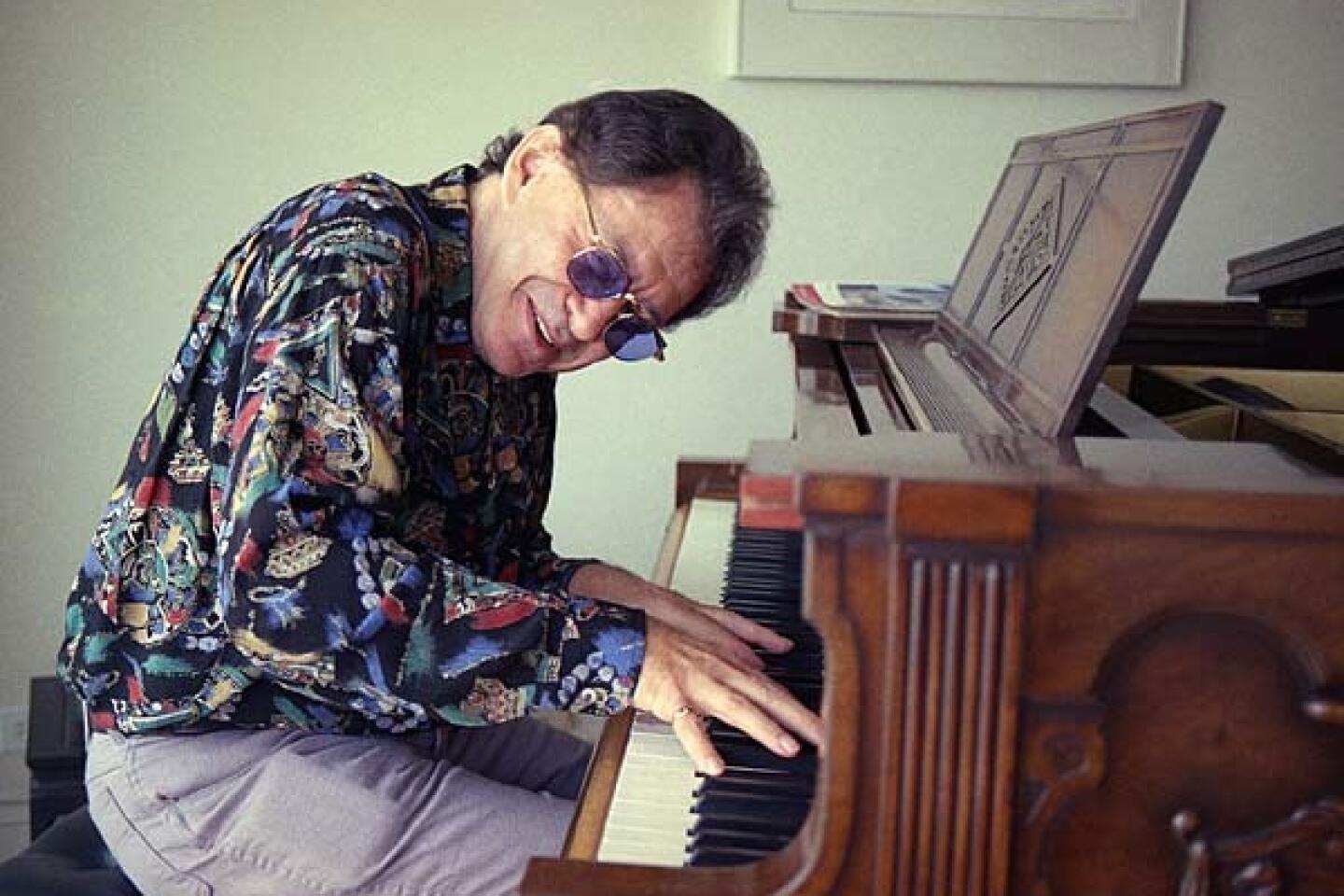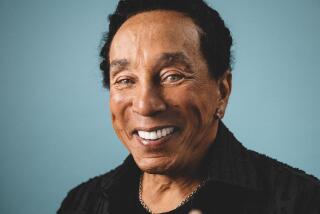Eddie Fisher dies at 82; popular 1950s crooner was known for his high-profile marriages
As Eddie Fisher once put it, by the time he was 33, “I had been married to America’s sweetheart and America’s femme fatale, and both marriages had ended in scandal.
“I’d been one of the most popular singers in America and had given up my career for love. I had fathered two children and adopted two children and rarely saw any of them. I was addicted to methamphetamines and I couldn’t sleep at night without a huge dose of Librium.”
And looking back over a tumultuous life that included his years with Debbie Reynolds and Elizabeth Taylor, he wrote in his 1999 memoir, “Been There, Done That,” that he had learned one important lesson: “There were no rules for me. I could get away with anything so long as that sound came out of my throat.”
Fisher, who died Wednesday at 82 at his home in Berkeley from complications of hip surgery, traveled one of the rockier roads in show business, one marked by well-documented personal and professional peaks and valleys.
But there was no denying the impact of “that sound” that came out of the darkly handsome young Philadelphia native’s throat during his 1950s heyday.
“He had the biggest voice I ever heard,” singer Andy Williams told The Times on Friday. “I used to do numbers with him and Bobby Darin on my show. He used to blast the hell out of us. His voice was so big, round and full.”
Beginning with his first hit, “Thinking of You,” in 1950, Fisher became one of America’s most popular recording artists, a singer whose looks and voice made bobby-soxers swoon and spurred the creation of fan club chapters around the world.
During much of the ‘50s, Fisher had a long string of Top 10 — and No. 1 — hits, including “Any Time,” “Tell Me Why,” “I’m Walking Behind You,” “I Need You Now” and “Oh! My Pa-Pa.”
He also headlined nightclubs, made TV guest appearances and starred in his own popular 15-minute TV music show, “Coke Time With Eddie Fisher,” from 1953 to ’57. That was followed by “The Eddie Fisher Show,” an hour-long music-variety program that aired from 1957 to ’59.
But in the end, Fisher told the Miami Herald in 1999, “it isn’t the music that people remember most about me. It’s the women.”
His 1955 marriage to Reynolds, Hollywood’s girl next door, was greeted with headlines such as “America’s Sweethearts Tie Knot.” The marriage produced two children, Carrie and Todd.
But Fisher outraged fans when he left Reynolds for Taylor after Taylor’s husband and Fisher’s best friend, film producer Michael Todd, was killed in a plane crash in 1958. Fisher and Taylor were married the next year.
But then Taylor fell in love with Richard Burton during the filming of “Cleopatra,” which generated another round of international headlines and caused Fisher to check into a New York City hospital with a reported nervous breakdown in 1962 after returning from Rome, where his wife was making the movie. The Fisher-Taylor divorce became final in 1964.
“This was an era when the movie magazines were going full force, and the coverage” of Fisher’s romantic entanglements “saturated popular culture to the max, for years on end,” recalled film reviewer Kevin Thomas, a former Times staff writer.
Fisher, Thomas said, “was the real loser in all of this. He got heaps of scorn for deserting Debbie. In the magazines, she was the sweet girl next door who had been cast aside for the legendary temptress.”
Fisher’s 1967 marriage to actress and singer Connie Stevens, with whom he had two daughters, Joely and Trisha Leigh, ended in divorce in 1969. He was married to Terry Richard, a former beauty queen, from 1975 to ’76.
Fisher’s fifth wife, Betty Lin, a Chinese-born businesswoman whom he married in 1993, died in 2001.
Although Fisher co-starred with Reynolds in the 1956 comedy “Bundle of Joy” and co-starred with Taylor in “BUtterfield 8,” the 1960 drama for which Taylor won an Oscar, he never developed his own film career.
With the impact of rock ‘n’ roll, Fisher’s record sales began to decline in the late ‘50s.
“It is very hard to overestimate his popularity in the 1950s,” Thomas said. “He was on TV all the time. He really was big, and then the whole rock ‘n’ roll revolution came along. His music was going out of style, and he would have had a tough time anyway, and then there was all this coverage of his personal business.”
Fisher was “underestimated for his natural talent and beautiful voice,” said Michael Feinstein, a singer known for interpreting American standards.
“He was saddled with substandard material that he was forced to record by his record company,” Feinstein told The Times. “Had he been given the opportunity to sing more enduring music, to record more enduring standards, as did Frank Sinatra, perhaps he would be better acknowledged today.”
“He was blessed with an extraordinarily beautiful, rich and resonant tenor voice that was quite thrilling,” Feinstein said. “He also had a fundamental problem with rhythm, and that sometimes got in the way of his ability to interpret a song.”
In a 1991 interview with the Chicago Tribune, Fisher said of rock ‘n’ roll: “I did not think that would have any effect on me. I thought I was above and beyond all that. I thought I had created this niche and nothing could take it away.”
The son of Russian-born Jewish immigrants and one of seven children, Fisher was born in Philadelphia on Aug. 10, 1928.
Encouraged by his grandmother to sing Jewish folk songs when he was 2 or 3, Fisher was singing duets in Hebrew with the cantor at their synagogue by the time he was 7 or 8.
By the time he was 15, he was a local radio star singing six days a week on three different shows. His picture appeared in advertisements on the fronts of trolley cars and, he later wrote, “the newspapers reported that by the time the trolley reached the end of the line, my picture was covered with lipstick.”
Fisher, who dropped out of high school in his senior year, sang with the bands of Buddy Morrow and Charlie Ventura when he was 18. He began achieving national recognition on entertainer Eddie Cantor’s radio show in 1949.
Fisher’s burgeoning career was interrupted by Army service from 1951 to ’53 while he was assigned to the Army Band entertaining troops in Asia and Europe. Even then, he was deluged with fan mail.
Fisher attempted numerous comebacks over the years.
Catching up with the singer during his engagement at the Westside Room in 1972, Times writer Mary Murphy noted that Fisher offered a running biographical commentary between singing his old hits:
“It went something like this, to the sound of snickering: ‘Bad luck is better than no luck at all.’ ‘I work alone — finally.’ … ‘I don’t sing professionally anymore. It’s a sideline. I’m really a marriage counselor.’”
Everybody, Murphy wrote, “was in on the put-down. They all knew Eddie’s secrets and elbowed each other to prove it.”
Fisher expanded on his “secrets” in “Been Here, Done That” and his 1981 book “Eddie: My Life, My Loves,” in which he claimed to have stopped abusing drugs. He later recanted.
“I wrote that book under the influence,” he told the Chicago Tribune in 1991. “Cocaine. That’s what happens with drugs. You lie. You lie a lot.”
He credited future wife Lin with persuading him to seek help, which he received at the Betty Ford Clinic. At the time of the interview, he had been clean for 18 months.
“That’s the longest I’ve been sober since I got out of the Army in 1953,” he said. “Really, I’m lucky to be alive and lucky to have a fresh outlook on life.”
In a statement from the Fisher family announcing his death, the family said that “the world lost a true American icon.
“He was loved and will be missed by his four children: Carrie, Todd, Joely and Tricia Leigh as well as his six grandchildren. He was an extraordinary talent and a true mensch.”
Times staff writers Valerie J. Nelson and Elaine Woo contributed to this report.
More to Read
Start your day right
Sign up for Essential California for the L.A. Times biggest news, features and recommendations in your inbox six days a week.
You may occasionally receive promotional content from the Los Angeles Times.









